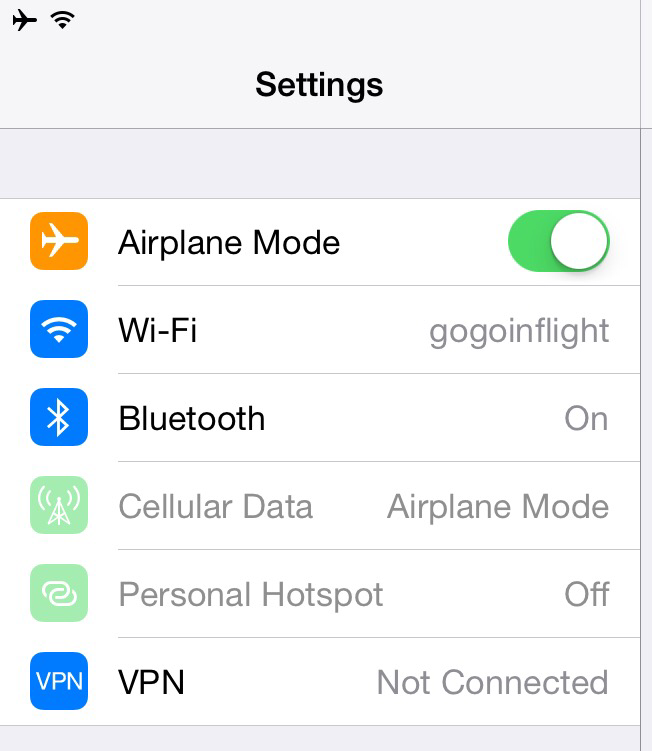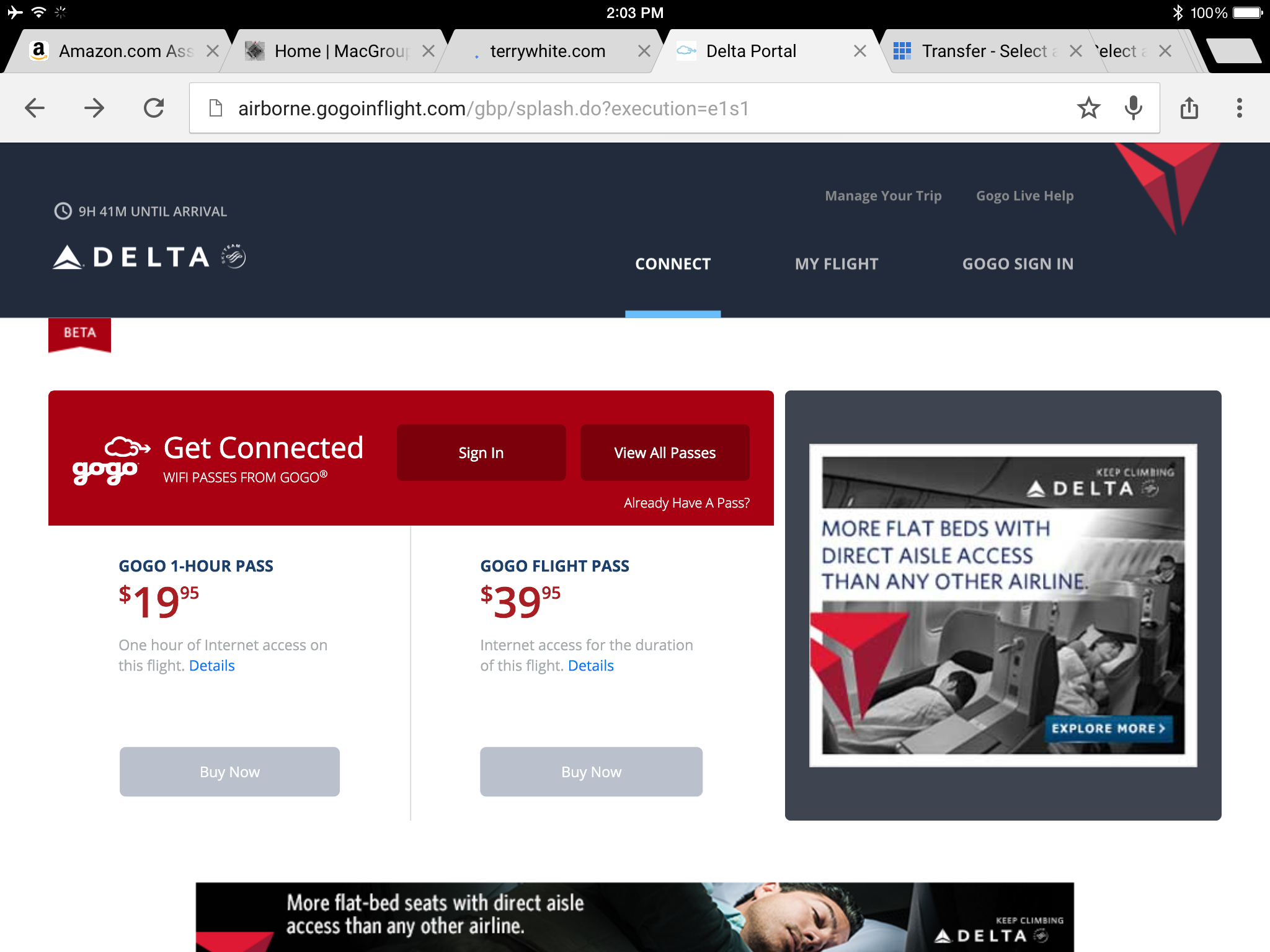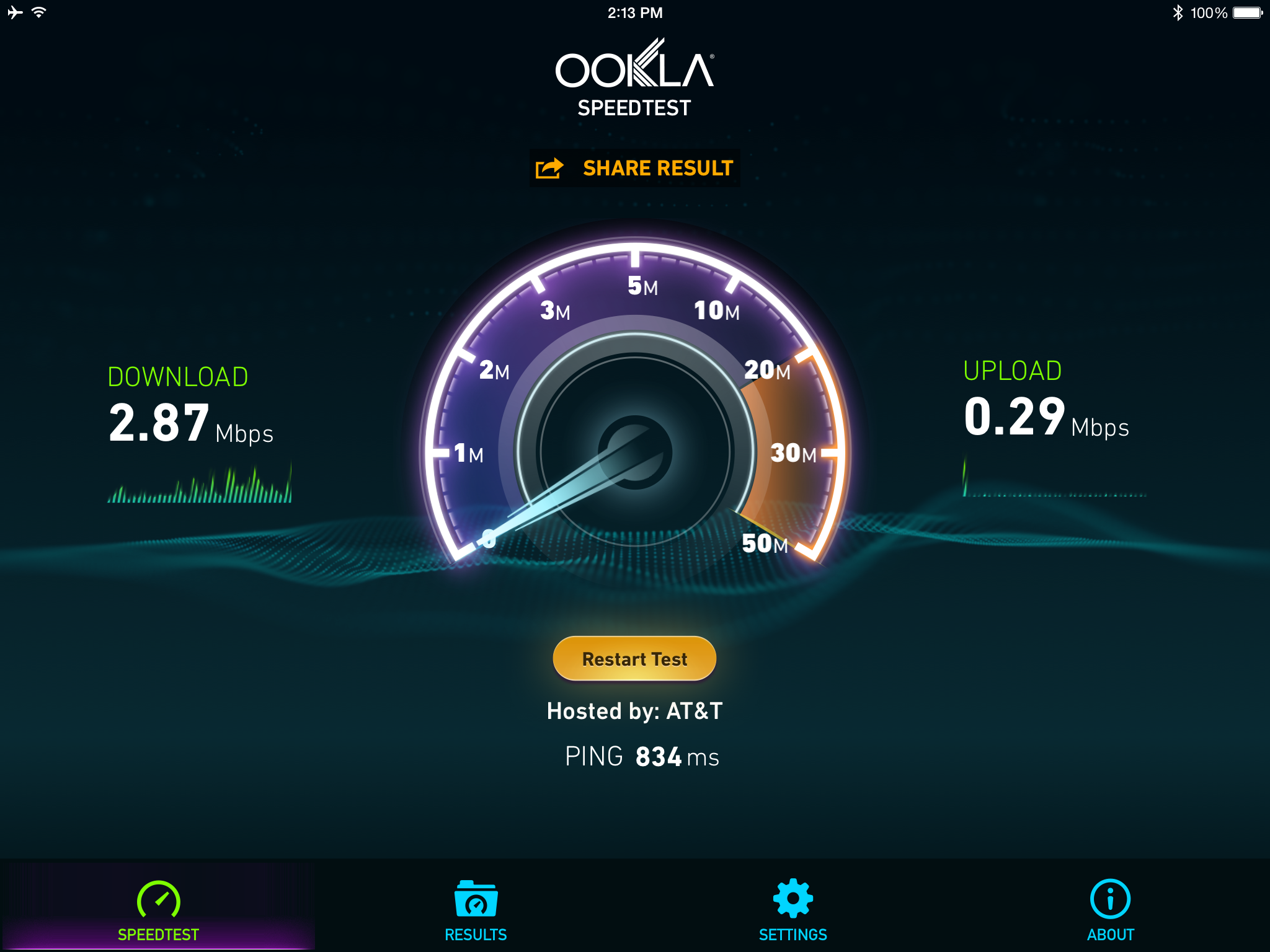
I’m headed back to Atlanta from Amsterdam today. The flight time is just over 9 hours. I did my usual downloads from my TiVo DVR the night before so that I would have some shows to watch and of course I have my MacBook Pro so that I can get some writing done. The last thing I expected on this Delta flight was to have WiFi internet all the way home! Sure I get my hopes up each time I board an international flight by looking for the familiar WiFi stickers found on 99% of all Delta domestic flights and like always there were no stickers present on this flight. However, once we got up to 10,000 feet I noticed that my phone was asking me to login to my corporate IPASS account (a roaming partner of Gogo). I just figured someone on the plane was faking a Gogo hotspot. However, it worked! I was blown away because I figured I wouldn’t see this until at least 2016. I asked the flight attendant just to make sure and she confirmed that “some” planes have it now and that we were “lucky” today. Lucky indeed!

So what does it cost to enjoy this international benefit? Since I have a corporate plan from work that covers Gogo InFlight WiFi I didn’t even think that about a cost difference at first, but as I started writing this I figured my readers would want to know. I went back to the regular logon page and the prices are high indeed. $19.95 for one hour and $39.95 for the whole flight. While I appreciate this being a work perk, I gotta say that I would gladly pay $39.95 for WiFi on this 9 hour flight. The amount of stuff that I can get done (including this blog post) is worth it to me. The next question is how fast is it? Gogo inlfight wifi in the states uses a celluar system (plane to ground) and from I can see it’s based on 3G technology. When it first came out the speeds were decent, but lately they have been slow to almost unusable. Still slow is better than nothing, so I use it all the time.

Since connecting to the ground over the ocean is not feasible, any plane offering international service requires satellite connections instead. One of the first thing I did was run 4 consecutive speed tests to get an average speed and while it’s not screaming fast, it’s faster than the domestic service. I’ll take it!

The Bottom Line
I remember wishing for WiFi on long haul flights for years. It almost brings a tear to my eyes to see it finally making its way into my life and I commend Delta for making these investments to make air travel a little less painful.


So the Wi-Fi over the Atlantic oceans is faster than the Wi-Fi at my house makes no sense. 🙁
Ironically I read about Delta Wifi yesterday in the April issue of Airways Magazine. In short, the satellite retrofit of Delta’s 747 fleet is complete. They expect to complete the upgrade for their entire international fleet by the end of 2015.
Any chance you can help with configuring the HooToo Tripmate to work with Delta’s Gogo to be able to use one paid plan for all of my devices? (Phone, Tablet, and Laptop?) I’ve tried a few times now and can’t seem to get it to work. I get an IP address but the HooToo won’t pass through any requests, they keep getting redirected to the HooToo’s internal web server. Thanks!
Gogo blocks a lot of things including routers like HooToo. It’s not a configuration thing, it simply won’t work.
Thanks Terry. I figured that. However, I’m confused as to why the Tripmate Nano gets an IP address from Gogo (on the WAN side), but then still sends all traffic to the Tripmate admin interface instead of passing it through. That seems more like a Tripmate Nano issue than a Gogo issue.
Do you think they’re blocking via MAC address? I was looking for a way to modify/spoof the WAN-side MAC address, or a different travel router which allows that. Any tips?
FYI I’m not only trying to avoid paying here – I’d be happy to have my company pay for connecting multiple devices if I was allowed to connect them. For security policy reasons I can’t have my devices connect to an unencrypted network. So I’m trying to insert my own HooToo router in the mix to add the encryption. I don’t know why ANYONE runs unencrypted networks these days. :-/
Unfortunately, that won’t work for adding encryption. Your device HooToo connection will be encrypted, but you still need to transfer the data over the unencrypted HooToo gogoinflight connection. If your work has VPN, that would be the best way to get end-to-end encryption, even over spotty/public/shady WiFi connections
Benjamin — Valid point, thank you. I do already use a VPN for that purpose.
Gogo doesn’t care users’ security. It’s good to have internet during flight but an insecure WiFi is sometimes worse than having no internet. Hence, users should take care of their privacy themselves by using a VPN. I use Ivacy VPN, which encrypts the data to make it secure.